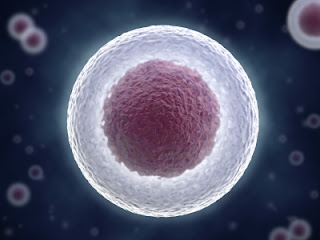This article is the fourth in a series of educational
pieces by Alexandra R. Bunyak, MD; she is the founder of the innovative
regenerative medicine practice BOUNDLESS, a sports, spine, and arthritis care
clinic in Encinitas.
Arthritis is an ancient degenerative condition — evidence
of its ravages can be found in all animals dating back to the dinosaurs — but
the most modern of scientific knowledge and techniques are being used to manage
and even conquer its effects.
Strategies from herbal therapies to the latest stem cell
treatment are helping people decrease symptoms, improve function, and delay or
avoid joint replacement surgery.
What is arthritis
and what are the different types?
Arthritis is defined as pain, stiffness, and inflammation
of the joints. There are two main categories of arthritis:
1. Inflammatory arthritis (ex: rheumatoid arthritis): a
set of less common conditions causing severe inflammation of multiple joints at
once and associated with systemic autoimmune disease, and
2. Degenerative arthritis (osteoarthritis): characterized
by damage to the cartilage, instability of the joint, milder inflammation, and
bony overgrowth of one or a few of joints. The majority of my patients have
this more common type of arthritis.
Is surgery the
only option for osteoarthritis?
Today we are no longer limited to passively waiting for
the arthritis to reach severe enough proportions to require joint replacement.
Additionally, many joints do not have an effective replacement option at this
time.
Recent advances in arthritis treatment allow us to help
stabilize the joints, decrease inflammation, and stimulate regrowth of
cartilage, potentially slowing arthritis progression and improving pain and
function for years.
What are the best
natural/holistic approaches for arthritis?
There are many things you can do yourself to improve your
arthritis symptoms:
1. Engage in physical activity: shown to improve joint
stability, decrease abnormal stresses by improving muscular control, improve
nutritional supply to the joints, and control weight and inflammation.
2. Diet plays a key role: make sure you eat an
anti-inflammatory diet rich in necessary nutrients for joint health.
3. There are a multitude of anti-inflammatory supplements
on the market, including tumeric, ginger, boswellia, glucosamine, and
flavocoxids, that help reduce inflammation without the side effects of
pharmaceutical anti-inflammatories such as Advil.
In addition, there are many natural/holistic approaches
that are available to you with the help of your integrative/regenerative
musculoskeletal physician:
1. Conservative options, including heel wedges and
bracing, biomechanical evaluation and correction, mind/body approaches,
therapeutic laser therapy, topical anti-inflammatories, and nutritional
testing/optimization
2. Minimally invasive therapies and regenerative
injections, including your own growth factors and adult stem cells to boost the
health and stability of your joints.
What are
regenerative injections and how do they work?
Regenerative injections, including prolotherapy, platelet
rich plasma injections, and adult stem cell therapies, are thought to work by
naturally stimulating your own systems of healing and regeneration. Research
has shown that these treatments can regrow cartilage and increase the stability
of a joint.
Of these, fat-derived stem cell therapies appear to be
the most effective in moderate to severe arthritis, helping over 90 percent of
arthritis sufferers appreciate relief of pain and improvement of function for
years.
How do I know
which regenerative approach I should choose?
Each regenerative treatment has strengths and weaknesses,
and each patient needs to be evaluated individually to craft the best treatment
plan. At BOUNDLESS, we offer multiple regenerative options, including both bone
marrow and fat-derived stem cell treatments, allowing us to help each patient
achieve their best result.

No comments:
Post a Comment